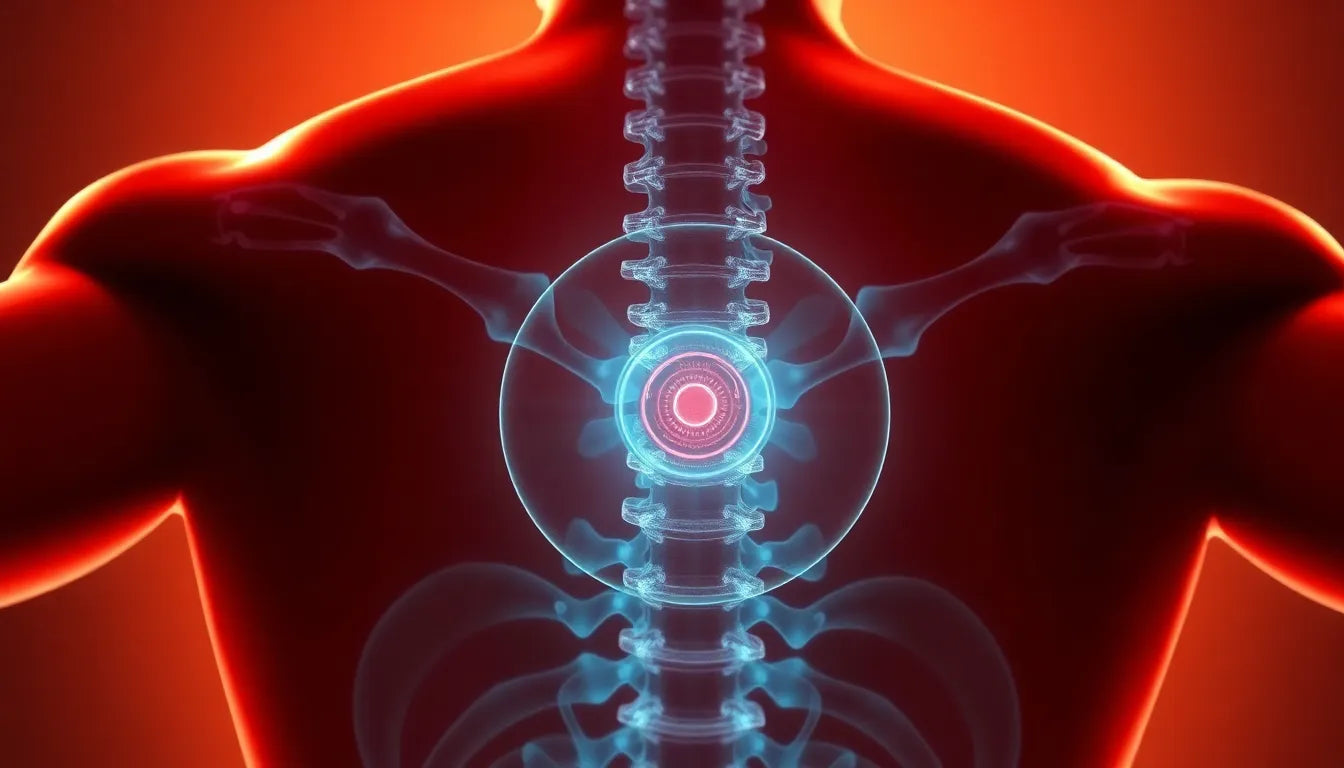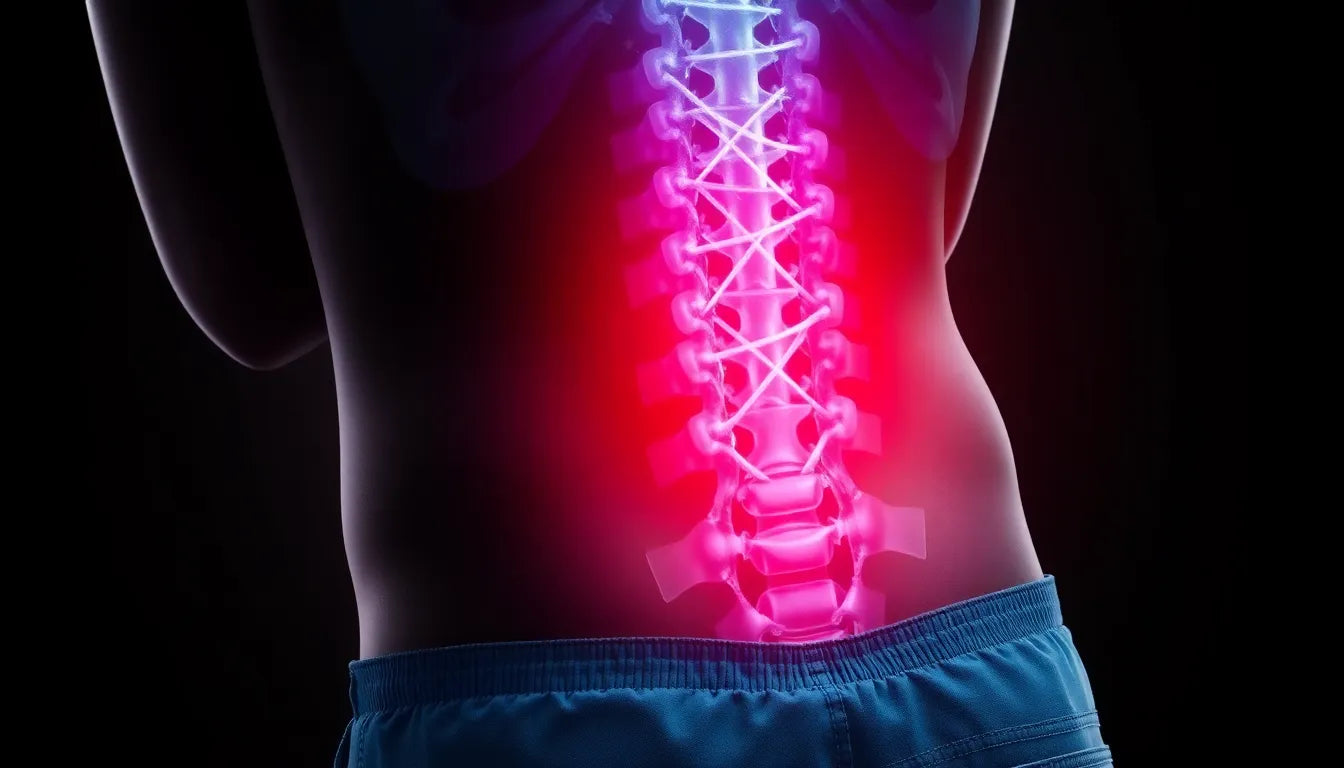Understanding the complexities of a herniated disc is crucial for anyone experiencing related discomfort and fatigue. A herniated disc occurs when the soft inner gel of a spinal disc pushes through a crack in the tougher exterior. This condition can result from normal wear and tear on the spine or excessive strain, such as heavy lifting or sudden movements. The progression of a herniated disc typically moves through stages: degeneration, prolapse, extrusion, and sequestration. Each stage represents a different level of severity and potential impact on an individual's health.
the overlooked symptom: fatigue
While back pain and discomfort are the more commonly recognized symptoms of a herniated disc, fatigue is often an overlooked consequence. This fatigue is not a direct symptom but rather an indirect result of the ongoing struggle with chronic pain, muscle weakness, and the overall impact on daily life. When your body is constantly battling discomfort, it can lead to physical exhaustion, making even the simplest tasks feel daunting. The persistent nature of the pain can disrupt sleep patterns, further compounding the feeling of fatigue. Additionally, muscle weakness, particularly in the legs, requires more energy to perform routine activities, contributing to overall tiredness.
the role of ergonomics
Addressing the symptoms of a herniated disc, including fatigue, requires a multifaceted approach, and ergonomics plays a vital role in this strategy. Ergonomic solutions are designed to optimize the way we interact with our environment, reducing strain and promoting better posture. By integrating ergonomic aids into daily routines, individuals can manage the symptoms of a herniated disc more effectively, reducing both direct and indirect symptoms like fatigue. This holistic approach not only alleviates pain but also enhances overall well-being, making daily activities more manageable and less exhausting.
Symptoms and indirect causes of fatigue
Herniated discs bring a myriad of symptoms that can indirectly lead to fatigue. Chronic pain and discomfort are at the forefront, with muscle spasms and radiating pain significantly impacting daily life. This persistent pain can drain physical energy, making even basic tasks feel overwhelming. According to data, individuals experiencing radiating pain often report a decrease in their overall quality of life, which in turn contributes to a sense of exhaustion.
Muscle weakness and its effects
Muscle weakness is another consequence of herniated discs, particularly affecting the legs. This weakness demands increased effort for routine tasks, such as walking or climbing stairs, which can be physically taxing and lead to fatigue. Everyday activities like carrying groceries or even standing for extended periods can become challenging, requiring more energy and thus contributing to a constant feeling of tiredness.
Numbness, tingling, and their impact
Paresthesia, characterized by numbness and tingling, further complicates the situation. These sensations can affect the arms and legs, reducing efficiency and making it difficult to perform tasks smoothly. This inefficiency can spill over into personal and professional life, causing frustration and fatigue as more effort is needed to complete simple tasks.
The burden of daily activities
Conditions like sciatica and radiculopathy exacerbate the challenges posed by herniated discs. These conditions make everyday activities more demanding, leading to increased fatigue due to the extra effort required. The cumulative effect of these challenges can significantly deplete energy levels, leaving individuals feeling constantly drained and impacting their overall well-being.
Medical and clinical perspectives
Insights from medical professionals
Medical experts, including those from New York City Spine and Johns Hopkins Medicine, provide valuable insights into the physical symptoms of herniated discs. They emphasize that nerve compression and muscle weakness, while not directly causing fatigue, can lead to exhaustion over time. Understanding these nuances helps in comprehending the broader impact of herniated discs on daily life.
Importance of clinical intervention
Clinical implications underscore the importance of seeking medical help for severe symptoms. As highlighted by NewYork-Presbyterian, untreated herniated discs can lead to persistent pain and fatigue, affecting one's quality of life. Early intervention can prevent long-term complications, ensuring that individuals receive the necessary care to manage their symptoms effectively.
By understanding the indirect causes of fatigue associated with herniated discs, individuals can better navigate their symptoms and seek appropriate solutions. This comprehensive knowledge empowers those affected to take proactive steps in managing their condition, ultimately improving their quality of life.
practical advice for managing herniated disc symptoms
Effectively managing the symptoms of a herniated disc involves a combination of pain management strategies and ergonomic solutions. Addressing chronic pain is crucial, and several approaches can be beneficial. Physical therapy, which includes guided exercises and stretches, can help alleviate pain and improve mobility. Additionally, incorporating adequate rest into your routine and avoiding activities that exacerbate pain are vital steps in managing symptoms.
ergonomic solutions for relief
Ergonomic solutions play a pivotal role in reducing fatigue and alleviating the discomfort associated with herniated discs. These solutions are designed to minimize strain and promote proper posture, which can significantly reduce pain and improve daily functioning. For instance, ergonomic chairs with lumbar support help maintain the natural curve of the spine, reducing pressure on the discs. Standing desks offer an alternative to prolonged sitting, allowing for better posture and reduced strain on the lower back. Moreover, lumbar supports can be used in various settings, providing additional support when sitting or driving.
| Ergonomic Product | Benefit |
|---|---|
| Ergonomic Chair | Supports spinal alignment and reduces lower back strain. |
| Standing Desk | Encourages better posture and reduces prolonged sitting. |
| Lumbar Support | Provides additional support for the lower back in various settings. |
Incorporating these ergonomic solutions into daily life can significantly improve comfort and reduce the fatigue often experienced by those with herniated discs. By optimizing the work and home environments, individuals can manage symptoms more effectively and improve their overall quality of life.
conclusion
In conclusion, understanding the relationship between herniated discs and fatigue is crucial for effective symptom management. While fatigue is not a direct symptom, the chronic pain, muscle weakness, and other challenges associated with herniated discs can lead to significant exhaustion. By employing ergonomic solutions and adopting a holistic approach to managing symptoms, individuals can reduce fatigue and improve their daily functioning. It is essential to address both the direct and indirect effects of herniated discs to enhance overall well-being and quality of life.
frequently asked questions
Can a herniated disc cause fatigue?
While fatigue is not a direct symptom of a herniated disc, it can result from the chronic pain and increased effort required for daily activities, leading to physical exhaustion.
What are the best ergonomic products for herniated disc relief?
Ergonomic chairs, standing desks, and lumbar supports are highly recommended for alleviating symptoms and reducing fatigue associated with herniated discs.
How can I prevent further strain on my spine?
Incorporate stretching exercises, maintain proper posture, and use ergonomic aids to support spinal health and prevent further strain.
When should I seek medical help for a herniated disc?
Seek medical attention if you experience severe pain, persistent symptoms, or a significant impact on daily activities, as early intervention can prevent long-term complications.























